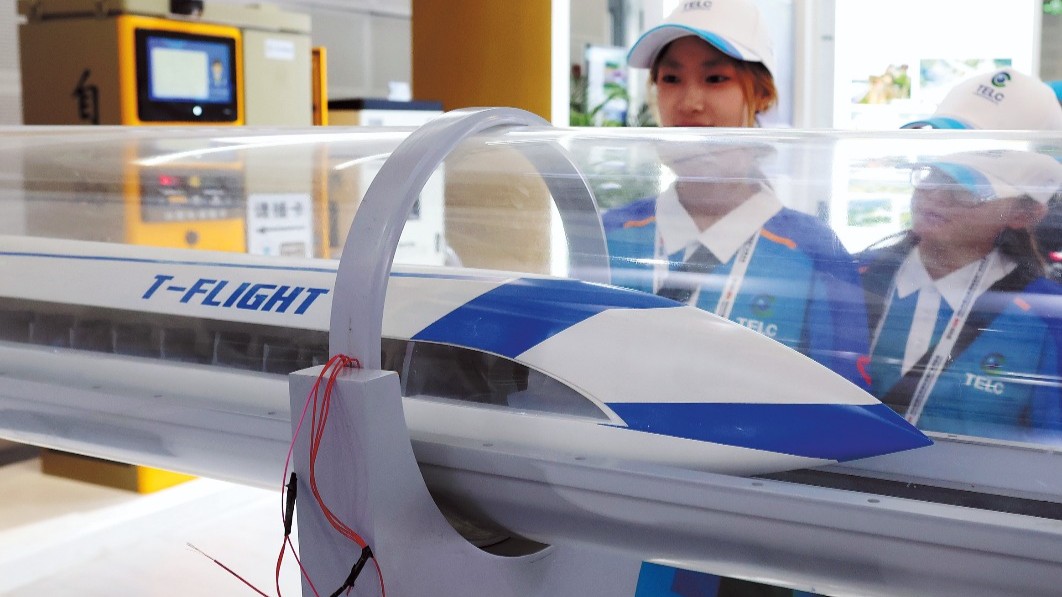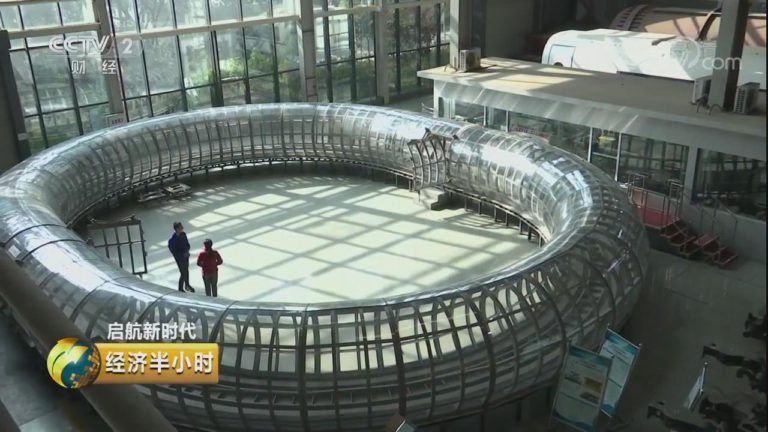Chinese scientists working on the world’s first full-scale vacuum-tube maglev test line claim they’ve found a solution to a problem that has plagued ultra-high-speed travel concepts like Elon Musk’s Hyperloop.
Their study reveals that even tiny flaws—such as slightly uneven track coils or minor bridge deformations—can create violent turbulence inside a maglev pod. These jolts could turn a smooth, futuristic trip into a nightmare, even in the near-vacuum conditions required for high-speed transport – like in the Hyperloop.
However, the Chinese team says they’ve managed to cut turbulence intensity nearly in half. That means “extremely severe bumps” are now reduced to being “pronounced, but not unpleasant.”
The engineers behind the study work at the Datong test site in Shanxi province, China’s flagship maglev research center. The team is led by Zhao Ming from the maglev and electromagnetic propulsion division of China Aerospace Science and Industry Corporation (CASIC), a state-owned defense and space contractor.
“Our research accounted for track irregularities, vertical bending of bridges, and single-frequency excitations induced by lateral irregularities in ground coils,” wrote Zhao and his colleagues, as reported by the South China Morning Post (SCMP).
Violent vibrations at key speeds
To understand the core issue, the engineers ran detailed simulations using supercomputers, backed by physical tests with scaled-down models. Their results uncovered that at high speeds—especially around 249 mph (400 km/h) and 373 mph (600 km/h)—the pods face dangerous resonance.
Using the 1940s-era Sperling Index, a globally recognized scale for ride comfort, the team measured the discomfort passengers would feel. At 249 mph, the vibrations reached levels labeled as “extremely unpleasant.” At 373 mph, the reading hit 4.2 on the Sperling Index—so intense that extended exposure would be harmful to humans.
At the intended top cruising speed of 612 mph (1,000 km/h), however, the vibrations dropped to a Sperling Index of 3.1, classified as “barely tolerable.”
The root of the problem lies in the lack of physical contact between the train and the track. Since the maglev floats on magnetic forces, any imperfection in the infrastructure can trigger resonance in the cabin. The result? “Extreme levels of instability,” say the researchers.
“Under track excitation at an equivalent speed of 1,000km/h (612 mph), the car body exhibited peak vibration amplitudes at frequencies of 2.6 Hz, 5.2 Hz, 7.8 Hz, and 10.4 Hz,” they added.
AI-powered suspension system brings hope for Hyperloop
To fix the ride, Zhao’s team developed a hybrid suspension system. It combines traditional passive air springs with advanced electromagnetic actuators. These actuators don’t work alone—they’re controlled by artificial intelligence.
The AI uses two smart strategies to reduce turbulence. One is called “sky-hook” damping, which simulates an invisible stabilizer linked to the sky. It uses real-time speed data to fight low-frequency jolts.
The second is PID control, a standard in engineering that adjusts forces using a trio of tuning methods—proportional, integral, and derivative. Here, the team optimized the system using NSGA-II, a type of genetic algorithm that helps the AI adapt to changing track conditions.
Tests with a 1:10 scale model and six-axis motion simulators showed impressive results. Vertical vibration intensity dropped by 45.6 percent, and Sperling Index scores stayed under 2.5—even at high speeds. That means the ride was “more pronounced but not unpleasant,” according to the study.
China’s vision goes beyond trains
While Elon Musk’s Hyperloop concept hit roadblocks and officially ended its test track program in 2023, China is pushing forward. Beijing sees maglev technology not just as a new way to move people, but as a stepping stone to other major advances, including low-cost space launches.
The Datong facility reflects this ambition. Engineers there have already developed airtight concrete tunnels and millimeter-precise track joints—hard-won milestones in maglev tech, SCMP reported.
According to the paper, there are still hurdles ahead. The suspension system, while successful in lab tests, still needs to be scaled up for real-world use. Engineers must also ensure it can handle emergencies, such as sudden braking or unexpected obstructions.
Despite these challenges, the Chinese team believes they’re on the right path. If their system can be proven at full scale, it could reshape not only public transportation but also how we think about high-speed travel.



